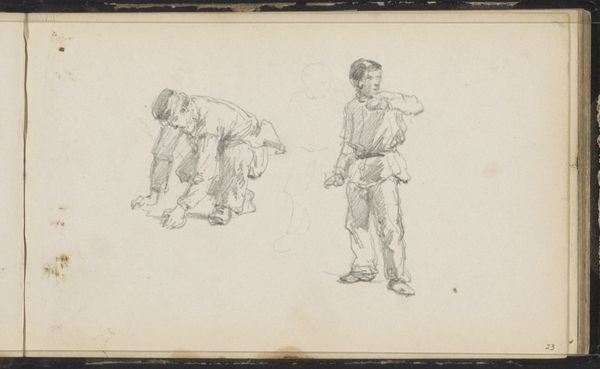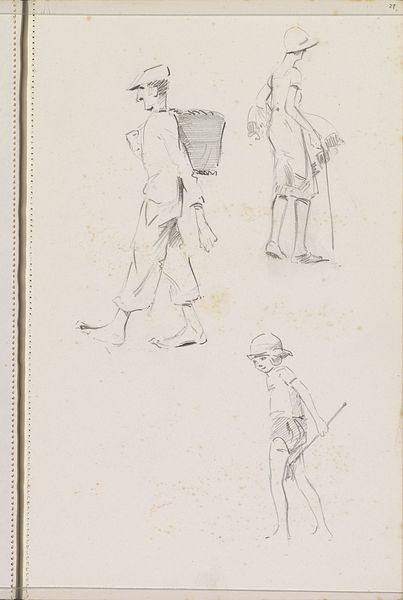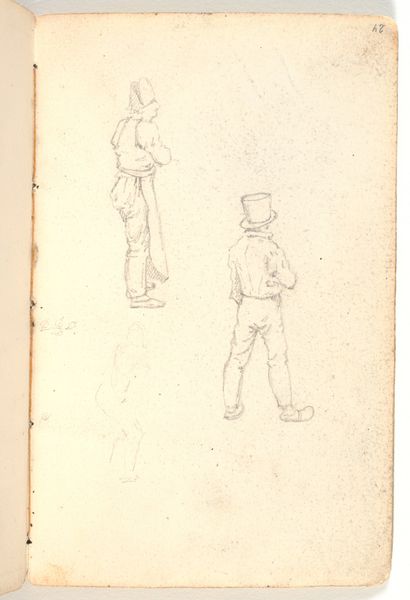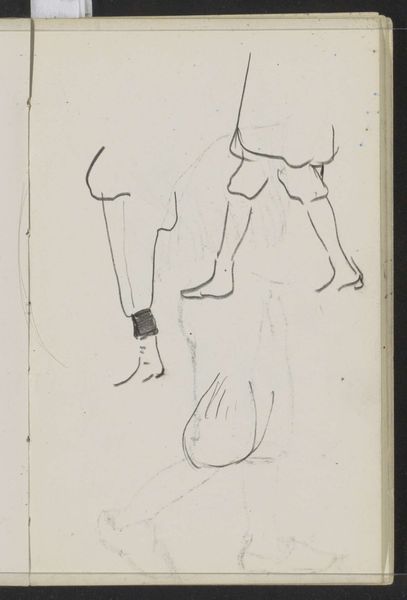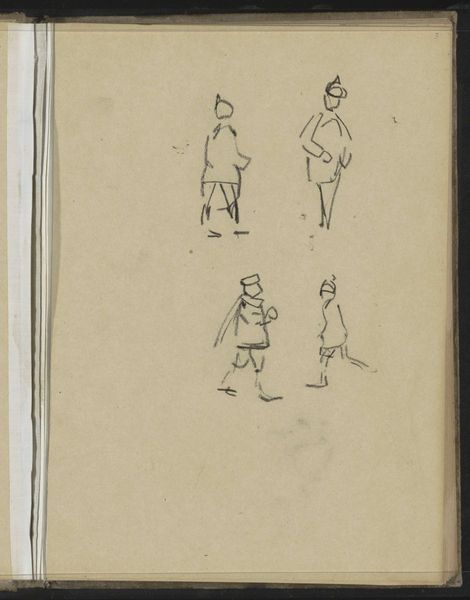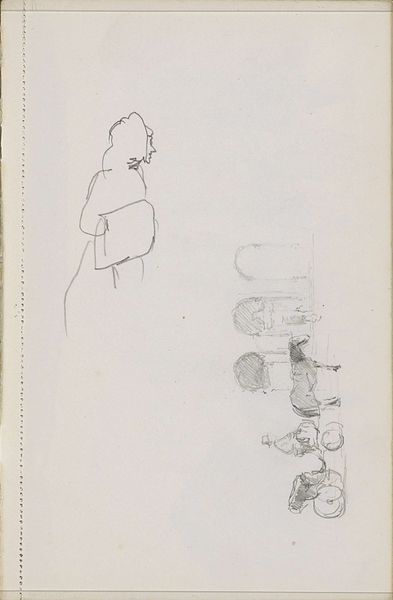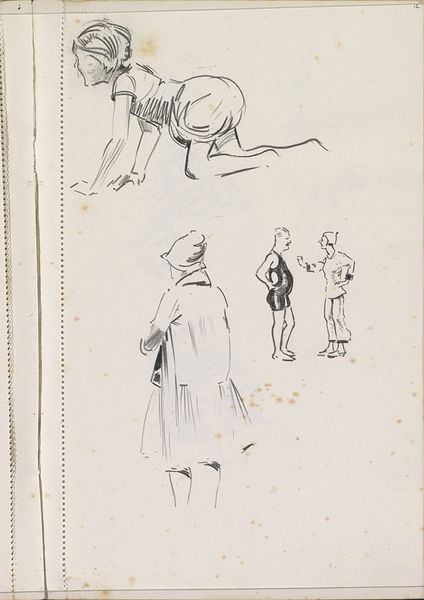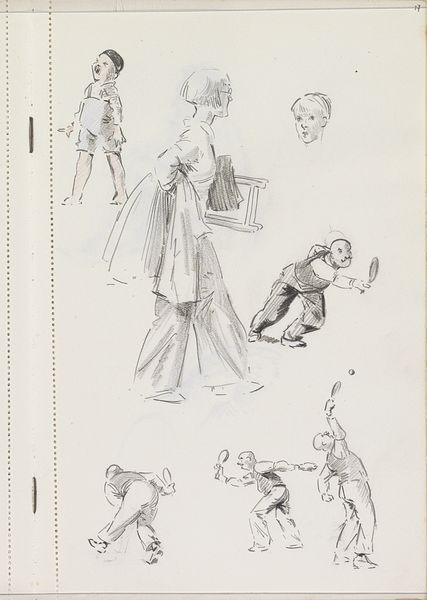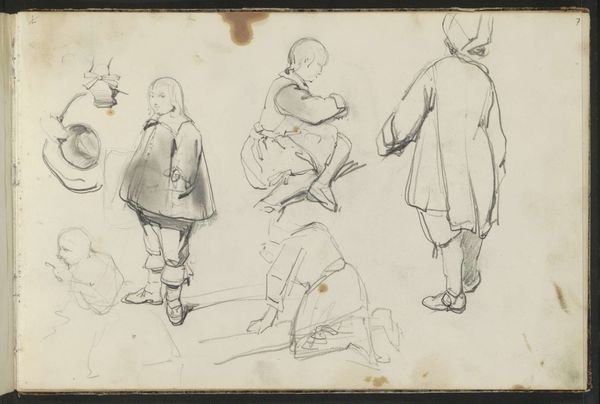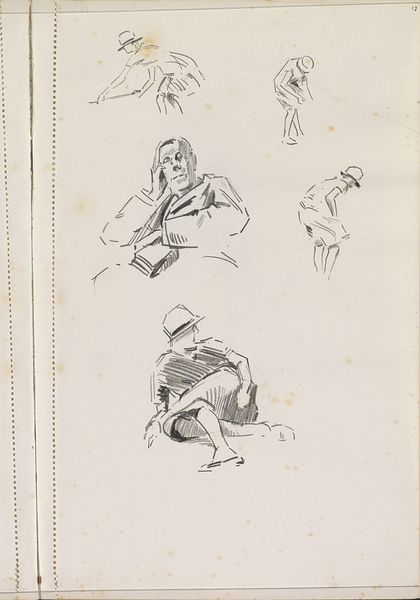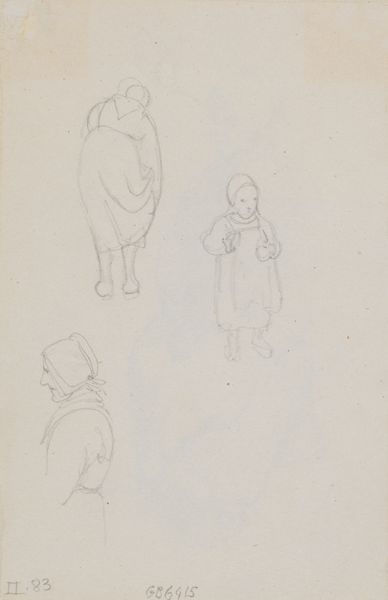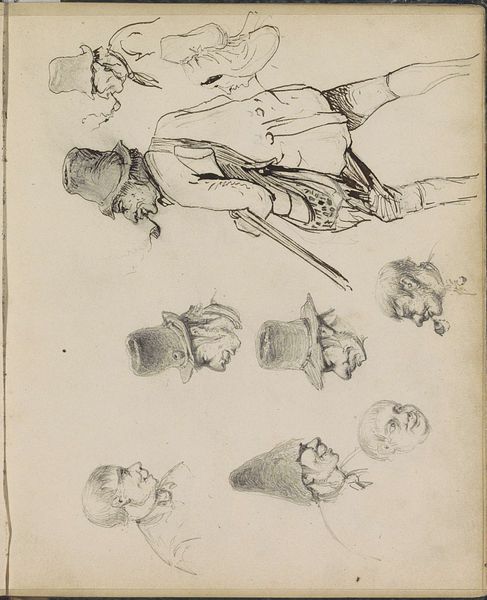
drawing, paper, pencil
#
portrait
#
drawing
#
imaginative character sketch
#
light pencil work
#
quirky sketch
#
pencil sketch
#
incomplete sketchy
#
figuration
#
paper
#
personal sketchbook
#
idea generation sketch
#
sketchwork
#
pencil
#
sketchbook drawing
#
academic-art
#
sketchbook art
Copyright: Rijks Museum: Open Domain
Editor: This is "Jongen op klompen en een zittende peuter," or "Boy on clogs and a sitting toddler" by Otto Verhagen, made around 1922 to 1925. It’s a pencil drawing on paper. I’m immediately struck by its informality. It feels like a page torn straight from the artist's sketchbook, capturing fleeting moments. What can you tell me about it? Curator: It’s tempting to view this solely through an aesthetic lens, but consider the social context. The clogs, the simple clothing—these speak to a working-class existence. The informality you noted might reflect Verhagen's connection to his subjects or his intent to depict everyday life authentically. The sketches' incompleteness further emphasizes the children's transient, unfixed position in society at this time. Do you see how this connects to broader social issues of class and representation? Editor: I do. It’s easy to see the style and miss that it's depicting a particular class and possibly making a statement about it. Are the multiple sketches on one page significant? Curator: Absolutely. Think of the sketchbook itself as a space of possibility. The repetition of the figures, the slight variations in their poses, speak to the multiple, perhaps even contradictory, ways childhood and identity are formed. Verhagen isn't presenting a definitive portrait, but a fluid exploration. What does that fluidity suggest to you? Editor: Maybe that childhood itself is a fluid state? Or that identity is something constantly being formed and reformed by your surroundings? Curator: Precisely! And, considering the time period, this could even be interpreted as a subtle challenge to the more rigid social expectations of the era. It is just a sketchbook drawing on paper but contains an early modern ideal. Editor: I didn't expect so much could be gleaned from such a simple sketch! Now I realize the art is not just the image, but also a record of the historical contexts and potential responses. Curator: Precisely! Always try to consider the artwork through an intersectional lens and the work can communicate to more audiences.
Comments
No comments
Be the first to comment and join the conversation on the ultimate creative platform.

